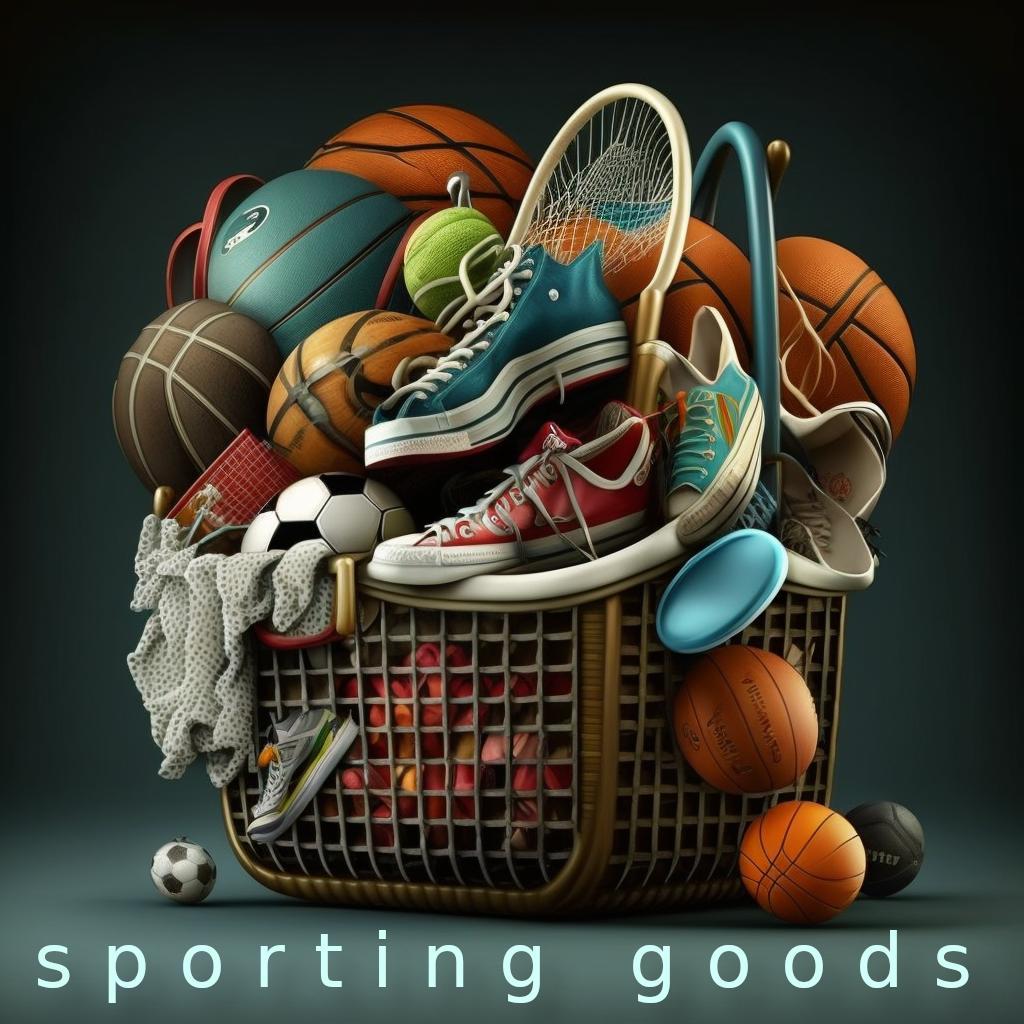


Whether you're a seasoned athlete, a weekend warrior, or someone embarking on a fitness journey, the world of sporting goods and sportswear offers a vast array of options to cater to every passion and activity. This comprehensive guide aims to provide valuable tips for navigating the realm of sporting goods and sportswear, helping you make informed choices, optimize performance, and stay stylish while breaking a sweat.
Assess Your Activity:
Before delving into the world of sporting goods, assess the type of activity you're engaging in. Whether it's running, weightlifting, cycling, or team sports, understanding the specific requirements of your chosen activity is crucial for selecting the right gear and sportswear.
Choose the Right Footwear:
Invest in high-quality athletic footwear designed for your specific activity. Running shoes, cross-training shoes, and cleats all serve different purposes. Proper footwear not only enhances performance but also minimizes the risk of injury.
Prioritize Comfort in Sportswear:
Comfort is key when it comes to sportswear. Choose fabrics that wick away moisture, provide breathability, and allow for freedom of movement. Brands that specialize in performance fabrics, such as moisture-wicking polyester and breathable mesh, are ideal for intense workouts.
Consider Compression Gear:
Compression gear, including compression shirts, shorts, and socks, can enhance circulation, reduce muscle fatigue, and aid in recovery. These items are particularly beneficial for activities involving repetitive movements or high-impact sports.
Layer Smartly:
For outdoor activities or varying weather conditions, layering is essential. Invest in moisture-wicking base layers to keep sweat away from your skin, insulating layers for warmth, and weather-resistant outer layers to protect against the elements.
Pay Attention to Fit:
Proper fit is non-negotiable in both sporting goods and sportswear. Ill-fitting equipment or clothing can hinder performance and increase the risk of injury. Take the time to try on items and ensure they provide the right level of support and comfort.
Safety First:
For sports that involve impact or high-speed movement, safety gear is crucial. Helmets, pads, and protective eyewear can prevent injuries and ensure you can enjoy your chosen activity with peace of mind.
Quality Over Quantity:
When it comes to sporting goods, prioritize quality over quantity. Invest in well-made equipment that is durable and designed for your skill level. Quality gear not only lasts longer but also enhances your performance.
Personalize Your Sportswear:
Express your style and personality by personalizing your sportswear. Many brands offer customization options, allowing you to choose colors, add logos, or even customize the fit of certain items. Feeling good in what you wear can positively impact your motivation and confidence.
Stay Informed on Technology:
Sporting goods are continually evolving with advancements in technology. Stay informed about the latest innovations in materials, design, and performance features. This knowledge can guide your choices and help you take advantage of cutting-edge gear.
Mindful Maintenance:
Extend the life of your sporting goods and sportswear through regular maintenance. Clean equipment after use, follow care instructions for sportswear, and store items properly to prevent wear and tear.
Explore Second-hand Options:
Consider exploring second-hand sporting goods and sportswear, especially for activities where equipment upgrades are common. Many gently used items are available at a fraction of the cost, making it an eco-friendly and budget-conscious choice.
Sporting goods can be broadly categorized into the following categories:
Team sports equipment: This includes equipment and gear for team sports such as basketball, football, soccer, volleyball, and others.
Fitness equipment: This category includes equipment used for fitness training and exercises, such as treadmills, elliptical machines, weightlifting equipment, yoga mats, and more.
Outdoor sports equipment: This category includes equipment for outdoor sports such as camping, hiking, and fishing. Examples include tents, sleeping bags, fishing rods, and more.
Water sports equipment: This category includes equipment for water sports such as swimming, surfing, and water polo. Examples include goggles, swim caps, surfboards, and more.
Racquet sports equipment: This category includes equipment used for racquet sports such as tennis, badminton, and squash. Examples include racquets, balls, and shuttlecocks.
Athletic apparel: This category includes clothing and accessories for various sports and activities, such as shorts, shirts, shoes, and socks.
The most demanded sporting goods can vary depending on factors such as location, season, and cultural trends. However, some of the most popular sporting goods categories that are consistently in demand are:
Athletic footwear: Running shoes, basketball shoes, and other types of athletic shoes are always in demand for both sports and fashion purposes.
Fitness equipment: As people become more health conscious, the demand for fitness equipment such as treadmills, stationary bikes, and weightlifting equipment has increased.
Team sports equipment: Team sports such as basketball, football, and soccer have a large fan base, and there is a constant demand for equipment such as balls, gloves, and helmets.
Athletic apparel: Comfortable and functional athletic apparel is essential for many sports and activities. Popular items include performance shirts, shorts, leggings, and sports bras.
Outdoor sports equipment: As people continue to seek outdoor adventures, there is a high demand for outdoor sports equipment such as camping gear, hiking shoes, and fishing rods.
Water sports equipment: Water sports such as swimming, surfing, and kayaking are also popular, and the demand for equipment such as goggles, swim caps, surfboards, and kayaks continues to increase.
Sportswear is clothing designed for sports or other physical activities. It is designed to be comfortable, lightweight, and allow for a wide range of motion. Sportswear can also be worn for casual or everyday wear, as it has become a popular fashion trend in recent years.
There are several categories of sportswear that are designed for different types of sports and activities:
Running wear: Clothing designed for running, including shorts, leggings, and lightweight tops.
Gym wear: Clothing designed for working out in a gym or fitness center, including tank tops, sports bras, and sweatpants.
Yoga wear: Clothing designed for practicing yoga, including stretchy leggings, tops, and yoga pants.
Swimwear: Clothing designed for swimming, including one-piece swimsuits, bikinis, and swim trunks.
Outdoor wear: Clothing designed for outdoor activities, such as hiking, camping, and skiing. This category includes jackets, hiking pants, and fleece jackets.
Team sportswear: Clothing designed for team sports, including jerseys, shorts, and socks.
Golf wear: Clothing designed specifically for golfers, including polo shirts, golf pants, and golf shoes.
Tennis wear: Clothing designed for playing tennis, including tennis skirts, tennis shorts, and tennis shoes.
The sportswear and sporting goods sector has seen several innovations in recent years, including:
Wearable technology: Fitness trackers, smartwatches, and other wearable technology have become increasingly popular in the sportswear sector. These devices can track metrics such as heart rate, distance traveled, and calories burned, and provide real-time feedback to the wearer.
Sustainable materials: Many companies are now using sustainable materials such as recycled polyester, organic cotton, and bamboo in their sportswear and sporting goods products. This helps to reduce the environmental impact of the industry.
3D printing: 3D printing is being used to create customized footwear and sporting goods, which can improve performance and reduce waste.
Smart fabrics: Smart fabrics are textiles that are engineered with properties such as moisture-wicking, antimicrobial, and UV protection. These fabrics can improve comfort and performance for athletes.
Augmented reality: Augmented reality is being used to enhance the shopping experience for customers. For example, customers can use AR to see how a piece of sportswear will look on them before making a purchase.
Virtual training: Virtual reality and augmented reality are being used to create immersive training experiences for athletes. This technology can simulate game scenarios and help athletes to improve their skills.
Navigating the world of sporting goods and sportswear is an exciting journey that goes beyond aesthetics. By incorporating these tips into your decision-making process, you can optimize your performance, prioritize safety, and stay stylish while pursuing your passion for fitness and sports. Embrace the diversity of options available, and let your gear empower you to achieve your athletic goals. Game on!
Have a good choice,

We use cookies
We use cookies and other tracking technologies to improve your browsing experience on our website, to show you personalized content and targeted ads, to analyze our website traffic, and to understand where our visitors are coming from. Privacy Policy.